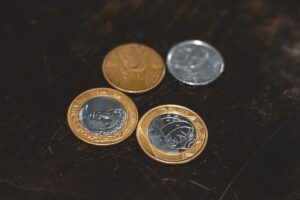The Evolution of Forex Trading: A Look at Its History and Origins
Forex trading, also known as foreign exchange trading, is the buying and selling of currencies in the global marketplace. It is the largest financial market in the world, with a daily turnover of over $6 trillion. But how did this market come to be? In this article, we will take a look at the history and origins of forex trading, from its humble beginnings to its current state as a global phenomenon.
The Origins of Forex Trading
Currency exchange has been a part of human civilization for centuries. As early as the Babylonian era, people were exchanging goods and services using different forms of currency. However, it wasn’t until the 19th century that the modern forex market started to take shape.
In the late 1800s, the gold standard was established, which meant that the value of a country’s currency was tied to a specific amount of gold. This system created a stable and predictable exchange rate between countries. However, it also limited the flexibility of governments to control their own economies.
The Birth of Forex Trading
The modern forex market as we know it today began to take shape in the 1970s. During this time, countries around the world started to abandon the gold standard and adopt a floating exchange rate system. This meant that the value of a currency was determined by market forces, such as supply and demand.
In 1971, the United States officially ended the convertibility of the US dollar to gold, which effectively marked the birth of the forex market. With the absence of a fixed exchange rate, currencies started to fluctuate in value, creating opportunities for traders to profit from these movements.
The Rise of Electronic Trading
In the early days of forex trading, transactions were primarily conducted over the phone or in person. However, with the advancements in technology, the forex market underwent a significant transformation in the 1990s.
The introduction of electronic trading platforms revolutionized the way forex trading was conducted. These platforms provided traders with real-time access to market prices and allowed them to execute trades with the click of a button. This made forex trading more accessible to individual traders and led to a surge in trading volumes.
The Growth of Retail Forex Trading
While the forex market was traditionally dominated by large financial institutions and corporations, the rise of the internet opened up new opportunities for individual traders to participate in the market. This led to the growth of retail forex trading, where individuals could trade currencies from the comfort of their own homes.
The availability of online forex brokers and trading platforms made it easy for anyone with an internet connection to open a trading account and start trading. This democratization of forex trading has been one of the key drivers behind the exponential growth of the market in recent years.
The Future of Forex Trading
As technology continues to advance, the forex market is likely to undergo further changes in the future. One of the most notable developments in recent years has been the rise of algorithmic trading, where computer programs execute trades based on predefined rules and algorithms.
Artificial intelligence and machine learning are also playing an increasingly important role in forex trading. These technologies have the potential to analyze vast amounts of data and identify trading opportunities that human traders may not be able to spot.
Conclusion
Forex trading has come a long way since its inception. From its origins in the Babylonian era to the modern-day global market, it has evolved into a complex and sophisticated industry. With the advancements in technology and the increasing accessibility of the market, forex trading is likely to continue its growth and play an even bigger role in the global financial system in the years to come.





